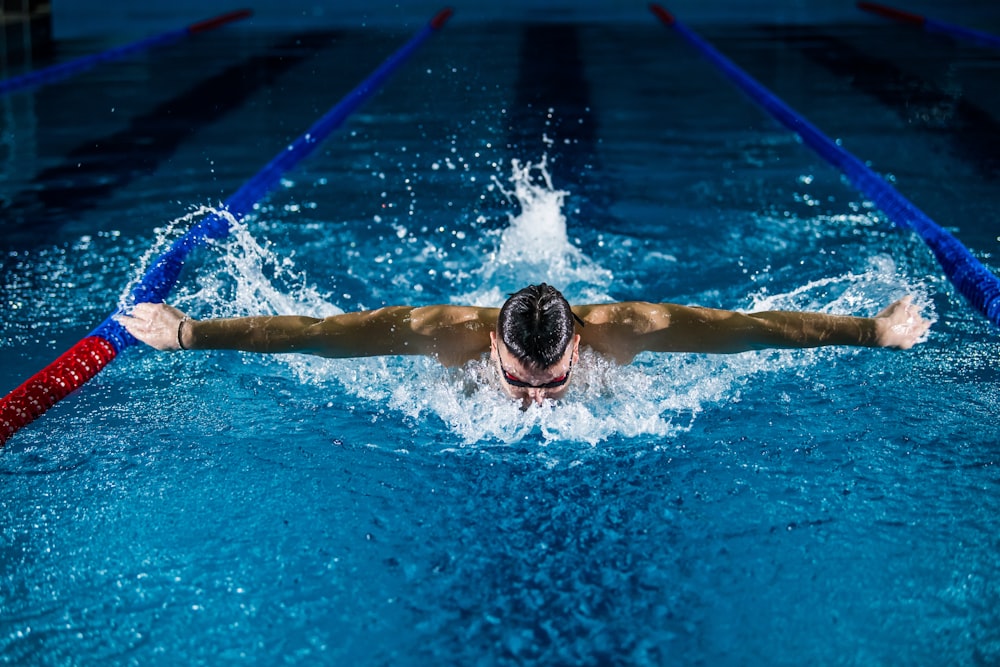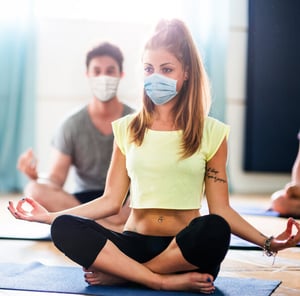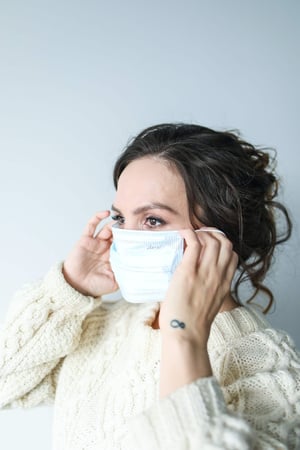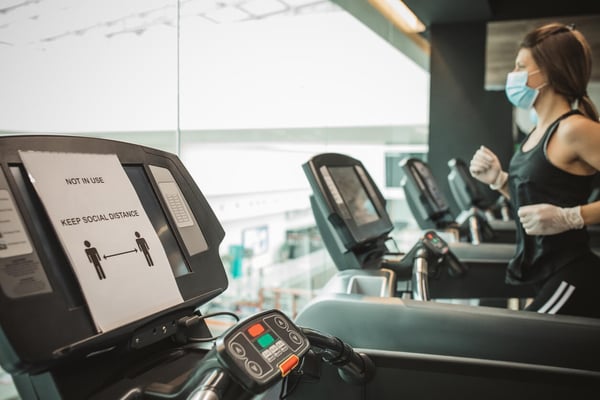MAKE A SPLASH
THIS SUMMER

Join Now For $0 Enrollment!
Learn MorePosted By: Chicago Athletic Clubs /
We are all excited to be able to return to the gym and the opportunity to get our bodies feeling healthy again, we do know that the world isn't quite out of the deep end yet when it comes to the spread of Coronavirus. Face coverings are required to be worn while working out in Chicago, so what does this mean for you and your workout routine? Why do we need to wear them? What is the impact it will have on you while exercising? What are some new considerations to take into account when working out in a face mask? We're taking a look at the ins and outs of wearing a face mask while working out, and 5 tips to make working out with a mask work for you. Chicago Athletic Club's Fitness Director, Sarah Ruhl, has shared her feedback and suggestions on working out and wearing a mask too.
 The benefits of exercise for the mind and body are well known. In addition to making your heart and muscles stronger, exercise can also provide stress relief and a sense of well-being, something we can all use a little more of right now. So for some, getting back to the gym is essential, but making sure that you and those around you are safe should be everyone's number one concern.
The benefits of exercise for the mind and body are well known. In addition to making your heart and muscles stronger, exercise can also provide stress relief and a sense of well-being, something we can all use a little more of right now. So for some, getting back to the gym is essential, but making sure that you and those around you are safe should be everyone's number one concern.
When it comes to wearing a mask to prevent the spread of Coronavirus, this has been recommended by the CDC because cloth face coverings stop respiratory droplets travelling through the air from one person to another. This is important because respiratory droplets are considered the main source of transmission for the virus. It is still believed that the virus can be spread by touching surfaces and then touching one's face (or vice-versa if one is already infected), which is why handwashing and routine cleaning and disinfecting of surfaces is still extrememly important, but this comes back to the concern of respiratory droplets having the main concentration of viral elements.
So, indoors in a gym where people may be around breathing heavily and working hard, wearing a mask will be instrumental in helping to keep you and everyone around you safer. In closed environments, and especially during more intense activities like dance and aerobics, people produce more respiratory droplets than during normal everyday activity, which means the face coverings will have more to catch for everyone's benefit. The truth is when it comes to wearing masks, however, it really requires participation from everyone to be truly effective. As Dr. Daniel J. Durand of Lifebridge Health told Underarmour: "I think of wearing face masks as a team sport, because it requires the participation of each team member to be successful."
 The main concerns surrounding wearing a mask while working out revolve around how the covering affects the person's ability to breath. Oxygen is essential for functionality of our muscles, our brain and our ability to control body temperature, so reducing airflow into the body during a workout is not something to be taken lightly. We need more oxygen while working out, and even a simple cloth covering can make it difficult to receive the adequate amount, which could lead to dizziness, lightheadedness and shortness of breath. Additionally, covering the nose and mouth can also mean it is more difficult for our body to release heat through respiration, something which can elevate our body temperature more quickly than normal during exercise.
The main concerns surrounding wearing a mask while working out revolve around how the covering affects the person's ability to breath. Oxygen is essential for functionality of our muscles, our brain and our ability to control body temperature, so reducing airflow into the body during a workout is not something to be taken lightly. We need more oxygen while working out, and even a simple cloth covering can make it difficult to receive the adequate amount, which could lead to dizziness, lightheadedness and shortness of breath. Additionally, covering the nose and mouth can also mean it is more difficult for our body to release heat through respiration, something which can elevate our body temperature more quickly than normal during exercise.
But does this mean we should opt for no exercise instead of exercise with a facemask?
Absolutely not. "Most people can perform every and all exercises with a face mask on," says Grayson Wickham, a physical therapist and certified strength and conditioning specialist at Movement Vault, to CNET. Athletes have often included items like masks and other restrictive items to improve performance under more difficult physical performances. According to the British Journal of Sports Medicine, wearing a mask may "...simulate the physiological effect of altitude training, albeit on a smaller scale." Of course, not all exercises may be advisable, and each person's body will respond differently. You may need to adjust the intensity level of your workout for a while as your body adapts to the physical experience of exercise with a face mask, especially if you have underlying health concerns. Just like with any exercise, be smart. If your heart rate feels too high, if you get lightheaded, dizzy or nauseous, stop your workout immediately and take a break. Your body knows what you need, so listen too it.
 To recap, in addition to maintaining our social distance, face masks may be the new norm for our regular routines. But that doesn't mean that you can't have a great workout while staying safe. They protect you and those around you, and if used properly and with awareness won't be detrimental to getting exercise back in your life. Just remember the 5 basics below and you will be off to a good, healthy start.
To recap, in addition to maintaining our social distance, face masks may be the new norm for our regular routines. But that doesn't mean that you can't have a great workout while staying safe. They protect you and those around you, and if used properly and with awareness won't be detrimental to getting exercise back in your life. Just remember the 5 basics below and you will be off to a good, healthy start.
| Alex Card
| Chicago Athletic Clubs
| Chicago Athletic Clubs
| Chicago Athletic Clubs
| Chicago Athletic Clubs
© 2025 Chicago Athletic Clubs. All Rights Reserved. Privacy PolicyEmployee Login
https://www.chicagoathleticclubs.com/
https://www.chicagoathleticclubs.com/services/personal-training/
0
5000
true